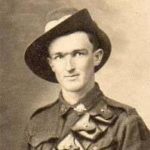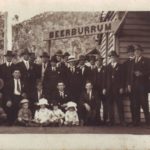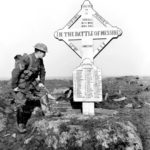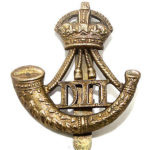Current research projects I am involved with:
Adopt-a-Digger Project identifying and researching the stories of the 2338 soldiers who served in the Great War with a tangible connection with the Sunshine Coast in Queensland. See also their Facebook page.
Beerburrum100 Project that identified the 600+ returned soldiers from the Great War that took part in the land settlement scheme at Beerburrum, just north of Brisbane. The hi-light of this project was an exhibition and community day held on 6 November 2016 marking the centenary of the founding of the settlement. Over 400 people attended this one day event including a handful of people that actually lived on the Settlement. Photos of the event can be seen on the Facebook page and photos of the original settlement can be seen in the Adopt-a-Digger website.
Messines100 is a Facebook project launched to commemorate the Centenary of the Battle of Messines on 7 June 2017. As part of this research I have written two articles: 47th Battalion, AIF casualties at the Battle of Messines, 7-12 June 1917 which is due publication in the journal of a leading Great War association and Casualty Evacuation Scheme, Battle of Messines, 7 June 1917 which will be available for download from this website in June 2017.
The D Company, 18th Durham Light Infantry, Battle of Serre, 1 July 1916 is a project about the fate of the 241 NCOs and Other Ranks that took part of the attack on Serre on the First Day of the Somme. This will be available for download from this website early 2017.
I have just started my research into the events surrounding, and consequences of, the five days the 25th Battalion, AIF was subjected to a prolonged mustard gas attack on the Passchendaele Ridge in October 1917. This article will be published on 27 October 2017.
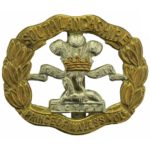
On 30 November 1917 the Germans launched a major counter-attack against the British around Cambrai. Within minutes the 1/5 South Lancashire Regiment, deloyed in front of the village of Villers Guislain, were surrounded and over 500 men were captured. Their story will soon be told……
The 7th Infantry Brigade, AIF served on the Western Front from 1916 until October 1918 fighting at Pozieres, the Retreat to the Hindenburg Line, Bullecourt, Messines, Menin Road, Polygon Wood, Passchendaele, Amiens, Albert and Hindenburg Line. My research is focusing on the role the brigade played in the last twelve months of the war and will describe their role and analyse how effective they were. A major article will be published before the end of 2018 highlighting their experiences. See the special Facebook page for interesting photos about the Brigade. https://www.facebook.com/7thBrigadeAIF/

I am currently updating and re-writing the book I originally published in 1991 about Oliver Cromwell’s attack on the Spanish West Indies in 1655. Hopefully this updated version will be published in 2020.
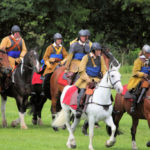
Researching and writing a book on the raising and role of the City of London cavalry militia during the English Civil War & Commonwealth 1642-1660. Due to be published in 2021-2022.

The role and contribution of 42nd Battalion, AIF in winning the war in 1918. The purpose of this article is to analyse the operational performance of the 42nd Battalion, AIF over a 90 day period from 3 July 1918, the eve of their attack at La Hamel, until 2 October, being the last day they were engaged in offensive operations during the Great War. Specifically, it will aim to ascertain the military effectiveness of it’s operations and to form an opinion as to whether it was able to fulfil the role alloted to it during this critical phase of the war. It will examine the roles of it’s officers and NCOs to establish whether they provided the standard of leadership expected of them and how they influenced the military outcomes of the battalion. The article will further review the battalions training regime since its formation in general, and for the six months prior to La Hamel specifically, to better understand how this benefited it’s performance. It will also examine the manpower “wastage” incurred by the battalion, to see how this impacted it’s ability to undertake the tasks required of it. Finally, the article will compare the performance of the battalion with its peers at brigade and divisional level. With this analysis a conclusion will be made as to the overall performance of the battalion during the period under review.

